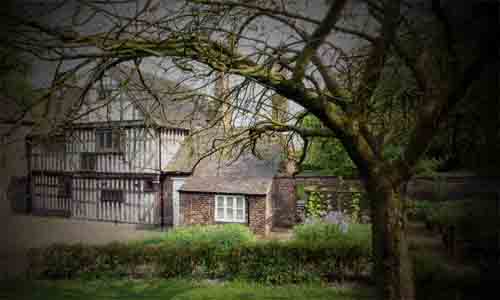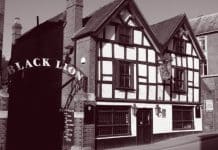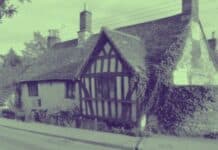ANDREW GARVEY looks at the haunted goings-on at Ford Green Hall – the oldest house in Stoke-on-Trent in Staffordshire
Where would horror be without that genre favourite, the old haunted house?
A dependable setting for seemingly thousands of films and books, there’s a reason it’s remained so popular. Old houses make strange, spooky noises.
Their history is, by definition, long and will undoubtedly include some dark, dark secrets.
A house of any significant age will have seen owners, tenants and guests die – whether peacefully in their beds or in more unpleasant and premature circumstances.
An atmospheric timber-framed yeoman farmhouse built in 1624, Ford Green Hall, home to the Ford family for over 200 years, is the oldest house in Stoke-on-Trent.
Open to the public as a museum since the 1950s and available to hire for weddings and baby naming ceremonies, the Hall’s paranormal history is long-established.
Sylvia Budzik, a live-in custodian/curator in the 1970s discussed some of her paranormal experiences in an interview with Stoke-on-Trent museums service in 2003, saying “without a doubt there was definitely something there” and noting she got so used to seeing strange things that when a fully-costumed member of a historical re-enactment group visited she simply assumed he was a ghost.

Recounting some of her spooky experiences on camera, Sylvia noted that one visitor continually disrupted her guided tour by chatting to a man in period costume, carrying a silver-topped cane.
Assuming the man was there to enhance the visitor experience, this woman was apparently quite disturbed to find no-one else on the tour, Sylvia included, could see or hear him.
Delving into the Ford family’s history, she discovered the last to live there, William Ford, had bequeathed a silver-topped cane and clothing which matched the spooked visitor’s description, to his son.
Sylvia went on: “My daughter would talk to somebody. We had listening devices (baby monitors) and she was just starting to talk, you know, ‘mummy, daddy’ and she was in the other side of the house and I was very wary of leaving her in there so I was constantly trotting across and in the end she ended up sleeping with us because we could hear her, you know, ‘lady’ she would say, ‘lady’ and I’d go in and she was talking to somebody, looking at somebody and be going ‘mummy, mummy, lady’ and that was quite scary.
“And where she was pointing to, the room had been altered and it would have appeared she was pointing to just this brick wall but on researching that side of the house and looking at the plans, there was an external staircase there at one time. The house had been divided into three cottages at some time before being bought by the council and becoming a museum and then it was knocked into a big house again. So where she was pointing and saying ‘lady’ could have been someone going down the stairs.”
Christopher Bell, an artist and illustrator, who also works at the Hall, delivering education workshops and guided tours notes “two different paranormal groups [who ran evening events in the last year] both picked up on similar things, a man standing at the top of the attic stairs in a red coat, looking down, hands on hips as if surveying what was going on. And both groups reported a strong smell of burning from the parlour.
The panelling in there is thought to have been taken from another house and fitted at the Hall.
The burning smell may mean that house had a fire – something that wouldn’t have been uncommon in the seventeenth century, especially as cooking on a large, open hearth was such a dangerous activity”.
It looks as if Ford Green Hall’s long-dead inhabitants are in no rush to move out anytime soon.







